Jamie Okuma, More Than a Native Designer
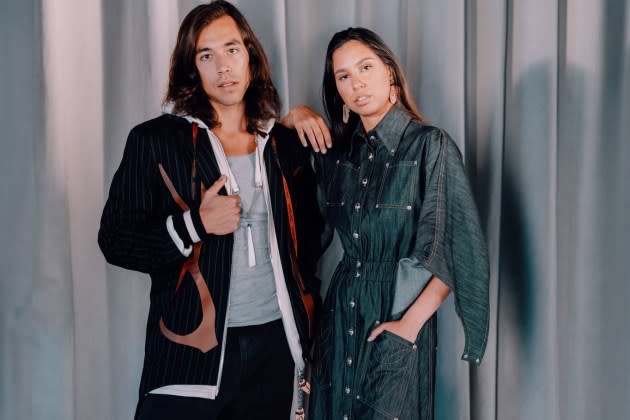
This weekend, more than 1,000 people will attend the Southwestern Association for American Indian Arts Fashion Shows, which have become hot tickets at the juried, 101-year-old Santa Fe Indian Market.
Many guests will be wearing clothing by Jamie Okuma, one of the show’s biggest draws, whose colorful kimono jackets, sheath dresses and blouses in parfleche, basket, shell and beadwork prints are collectors items that can sell out within 15 minutes of dropping on her website.
More from WWD
“No wallflowers allowed, only wild ones. Big color, bold graphics using digital imagery of native vegetation photographed from home on the La Jolla Indian Reservation.” That’s how the Luiseno, Shoshone-Bannock, Wailaki, and Okinawan artist/fashion designer describes her new collection, including a chic dark denim shirtdress and Italian viscose blazer inspired by traditional animal hide silhouettes, and a cozy bamboo knit hoodie dress with elk teeth shaped zipper pulls symbolizing wealth and fertility.
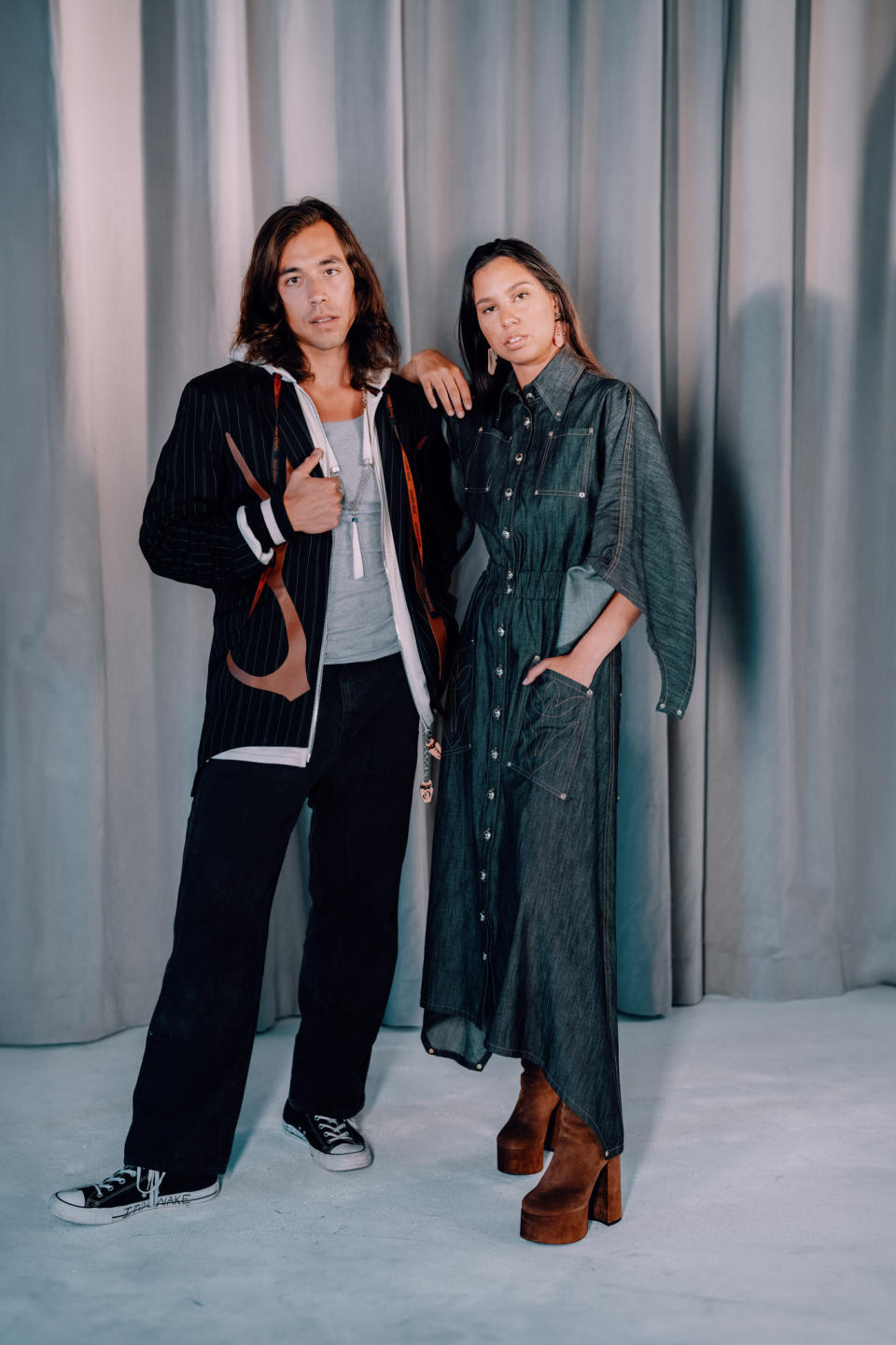
Okuma’s runway models will represent Native Hollywood. “Dark Winds” actor Jessica Matten, JaNae Collins from the forthcoming Martin Scorsese film “Killers of the Flower Moon,” “Prey” star Amber Midthunder, and Adrianne Chalepah from “Reservation Dogs,” have supported her by wearing her clothes on the red carpet.
The award-winning artist has her work in a number or museums, including the Metropolitan Museum of Art’s Costume Institute, where she will be part of the “Women Dressing Women” exhibition opening Dec. 7. She made history earlier this year becoming the first Native designer to join the Council of Fashion Designers of America, and traveled to New York in April for the new member reception.
“It was really great, but I felt totally out of place seeing designers I’ve admired for years…Zac Posen and, of course, Thom Browne,” she said. “I’m an introvert, I hate that about myself.”
Okuma is more at home in the close-knit creative community of Southern California where she lives and works near her mother, artist Sandra Okuma, who in the ’70s was a graphic designer for MCA Records in L.A., creating the original album artwork for Lynyrd Skynyrd’s “One More for the Road,” among others.
To model for the WWD preview, Okuma tapped Mato Standing Soldier, an L.A.-based solo artist and the music producer for groundbreaking Indigenous American TV series “Reservation Dogs,” a show on which her son, actor Bodhi Linton, appears.
She also tapped her niece, Neshay Linton, who in addition to modeling, is a Native culture monitor on construction sites in San Diego.
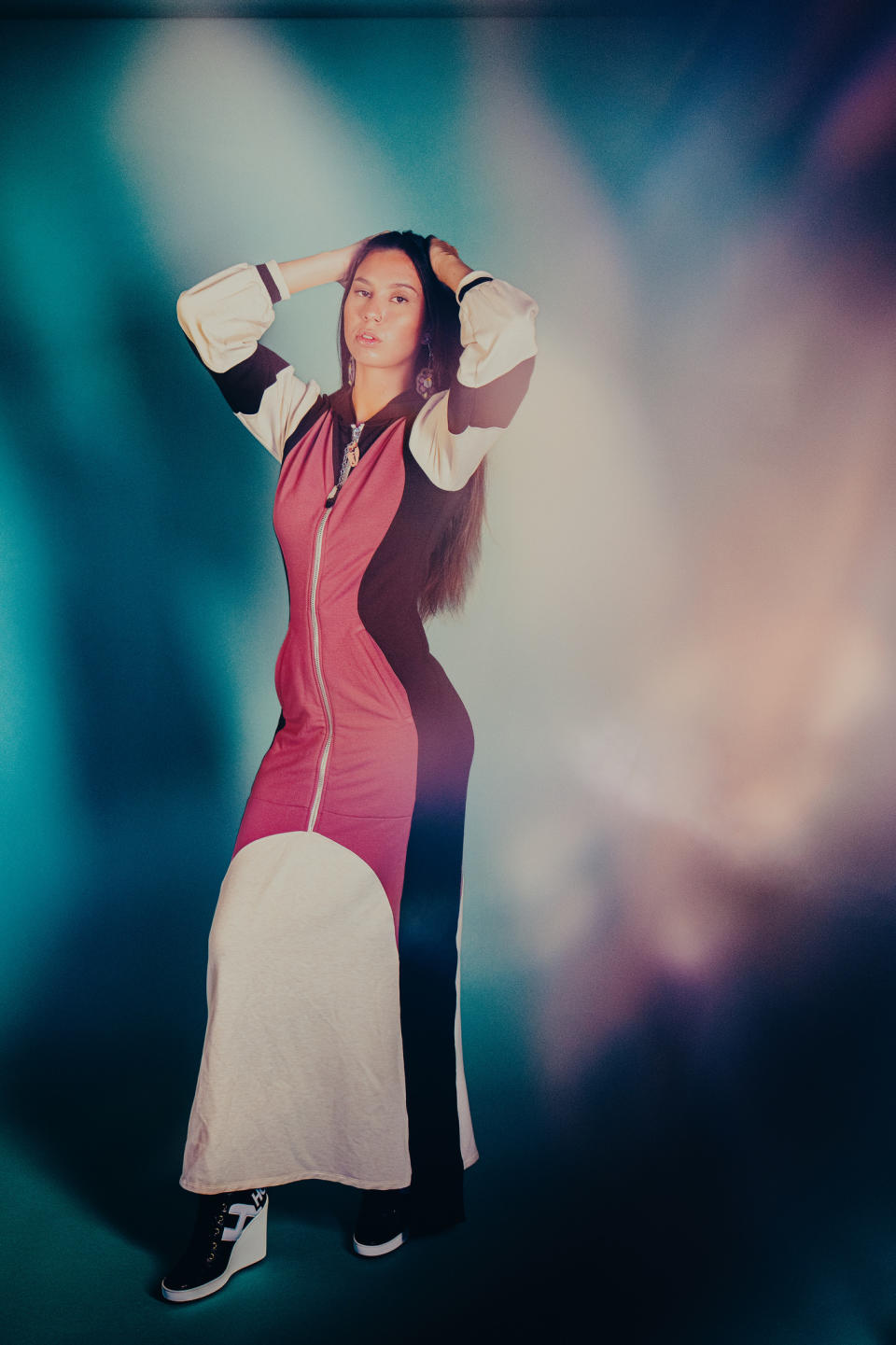
Like many Indigenous designers, Okuma is proud of her heritage but leery of being defined by it.
“I’m incredibly honored as an artist and designer to be a member,” of the CFDA, she said, but “the fact that I am a Native, and the first isn’t something that came to mind when I was invited. I completely understand and appreciate why some feel that needs to be commented on but it’s not my focus. Yes, creatively, my culture has a heavy influence in my work and aesthetic and I think that carries more weight when I think of my inclusion. I would like to think of it as my design aesthetic as being the first within the CFDA and not what and who I am.”
Okuma was born in Glendale, California, and her family moved to the La Jolla Reservation in Pauma Valley when she was five. Soon after, she beaded her first powwow dress.
As a child, she accompanied her mom to museums and art shows.
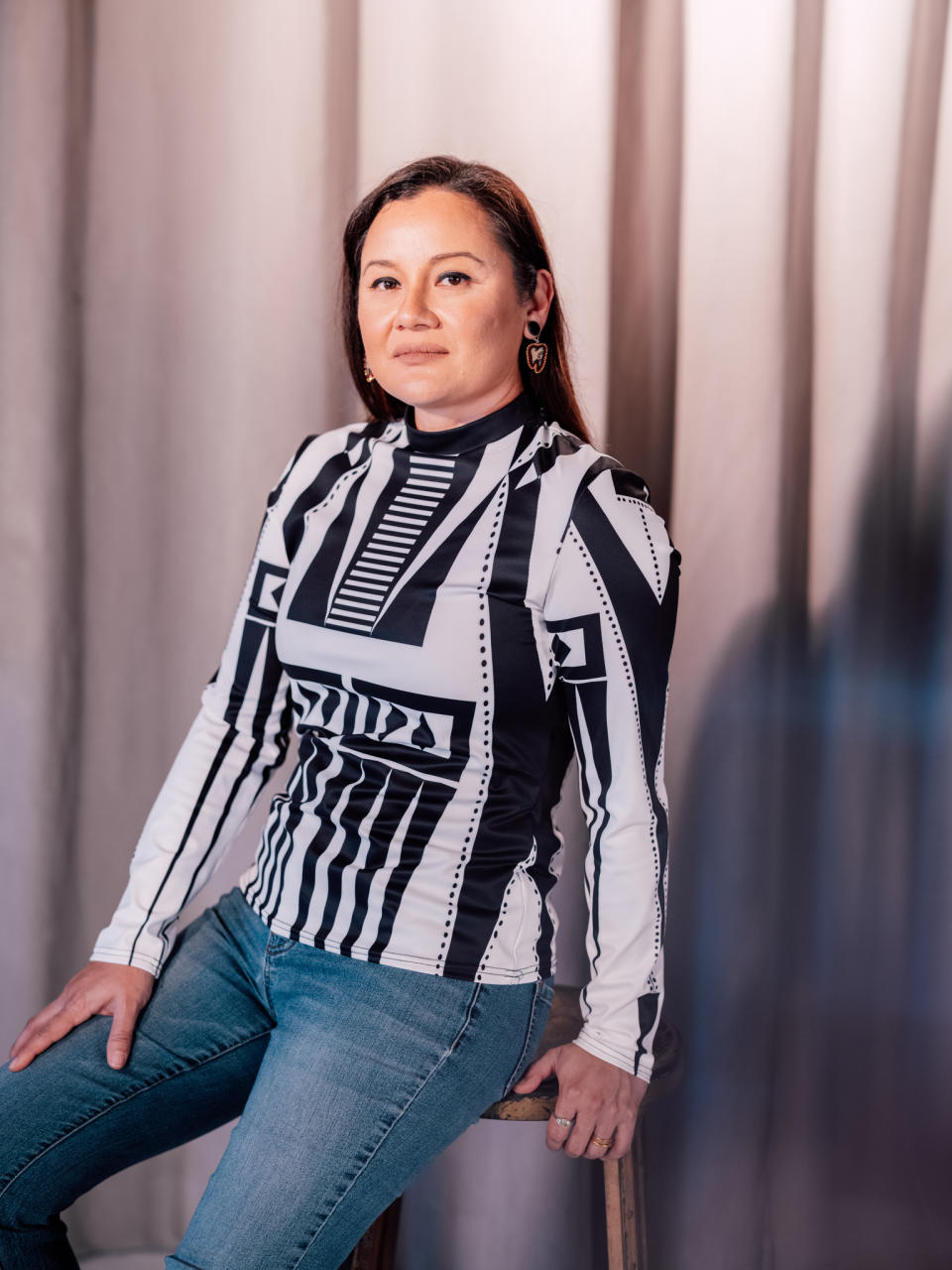
“It was important to her I see things, so every weekend we were at the Southwest Museum, which has now been absorbed into the Autry [Museum of the American West]. It was total exposure all the time. And for myself, I found it. I remember seeing Jackie Old Coyote modeling for Calvin Klein,” she said of the trailblazing model “discovered” by Bruce Weber, who became a fixture in print and on runways in the ’90s. “It’s so great to see it now as well, but I didn’t think there was a lack of representation then.”
Guided by her mom, she became a professional artist by the time she was in high school. Her first works were soft sculptures she called “my little people,” clothed in elaborate Native clothing in miniature using antique beads no bigger than grains of rice.
She took graphic design classes at Palomar collage in San Marcos, California, before attending the Institute of American Indian Arts in Santa Fe.
At age 22, she became the youngest artist to take Best of Show at Santa Fe’s Indian Market (2000), garnering a total of seven Best of Show awards over the years, three of them from the Heard Museum Guild Indian Fair and Market in Phoenix, Arizona.
Okuma always had a passion for fashion. “I would take my mom’s magazines, she had old Vogues, and I loved the jewelry so much. But there was no way I was ever going to have it, so I cut it out and taped it on myself.”
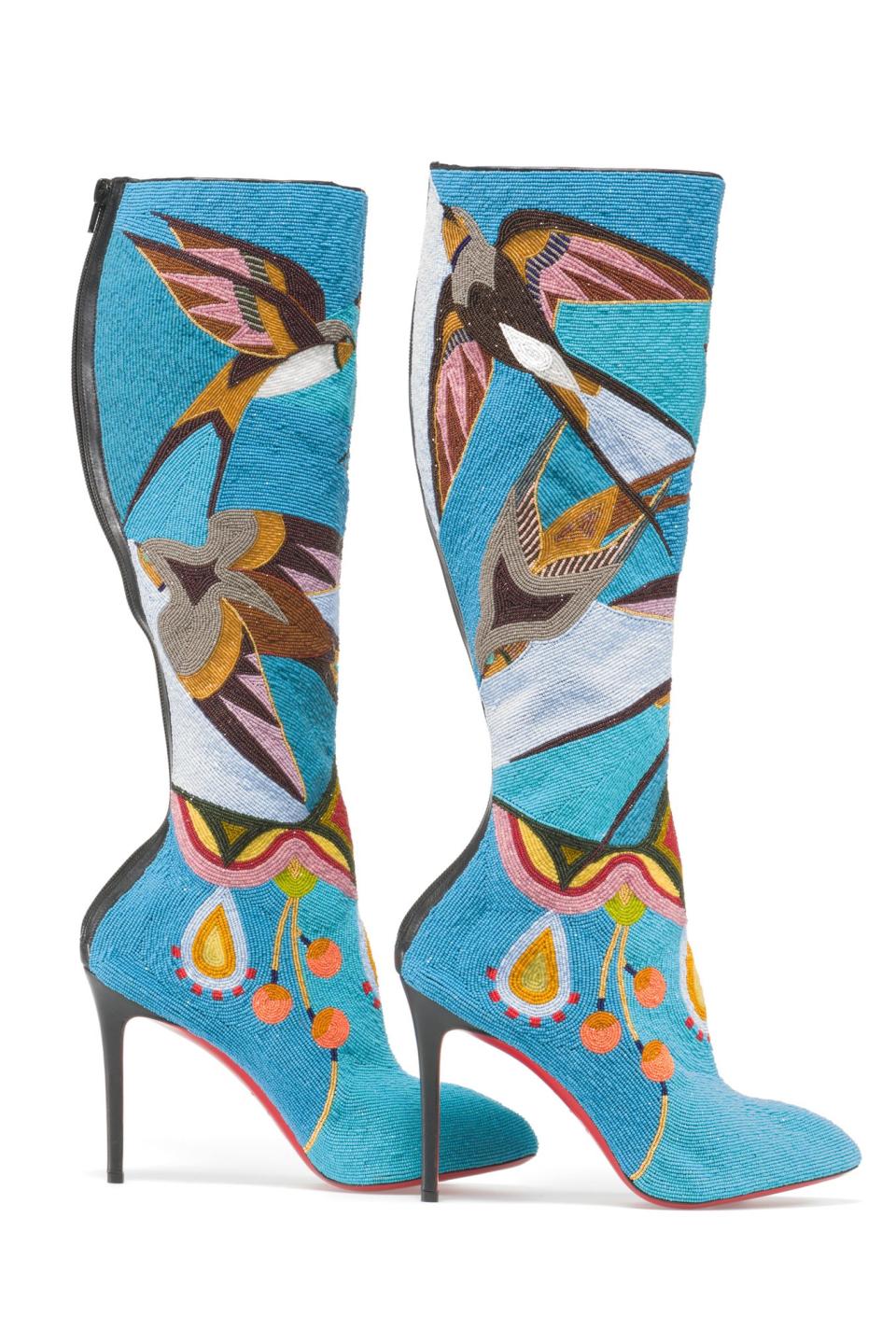
She also developed a shoe fetish after seeing Dorothy’s ruby red slippers in “The Wizard of Oz.”
Her mother suggested she try to use her “shopping problem” to her advantage. So Okuma began applying traditional beadwork to designer shoes by Christian Louboutin, Giuseppe Zanotti, Prada and others, which brought her further art world recognition and museum commissions that added financial security.
“Thank god for the artwork, because I didn’t realize the cost of Made in USA products is insane,” she said of her fashion line launched in 2012 with hand painted shearling jackets and boots. “I’m in the position now, where even if this collection flops, I will be OK.”
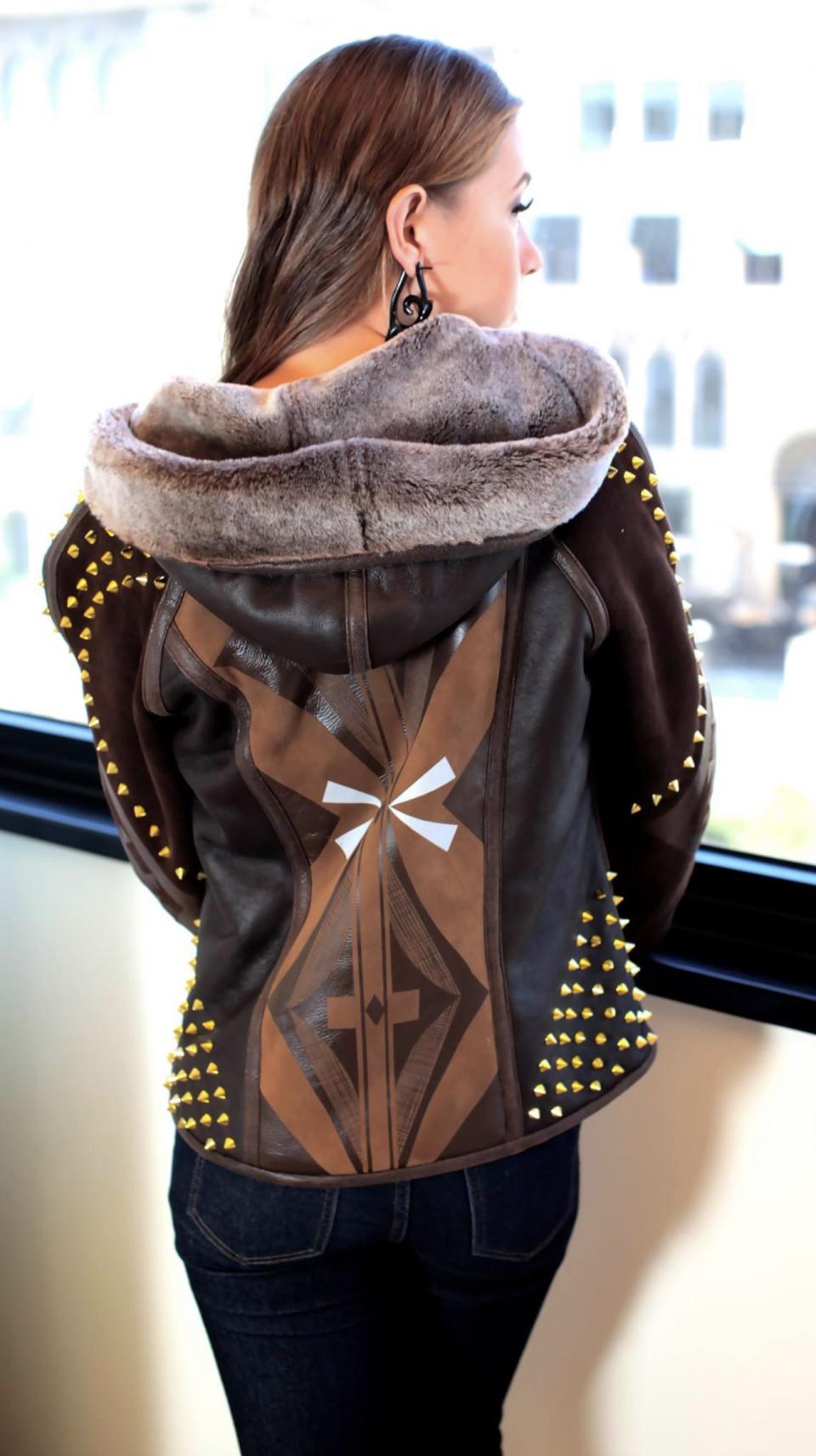
She sketches her prints, then has them developed in downtown L.A., where the clothing is manufactured.
“People don’t understand what goes into the cost of making garments — grading, marking, sampling, fitting,” she said, noting that some customers complain about her prices, which range from $60 to $600 for ready-to-wear, and much more for handmade, couture-like pieces. “My mission with the majority of my new collection is to educate customers about the process of local manufacturing, integrating natural fabrics and custom hardware, and that being the reflection of the wider price points.”
Okuma hasn’t ever taken on a loan or a backer. “I’ve heard the stories,” she said, also acknowledging, “But there’s no way now if I got an order from Neimans I could fill it.”
Although she has collaborated within her community (a beaded ring from a Pocahontas set created with fine jeweler Keri Ataumbi is in the Minneapolis Institute of Art’s permanent collection), she’s never been approached by a fashion or footwear brand like Target, H&M or Vans, for example.
She’d be game.
Okuma has been participating in the contemporary fashion shows at Indian Market since 2014, when the first runway event was held in a public park and the models changed in a U-Haul truck.
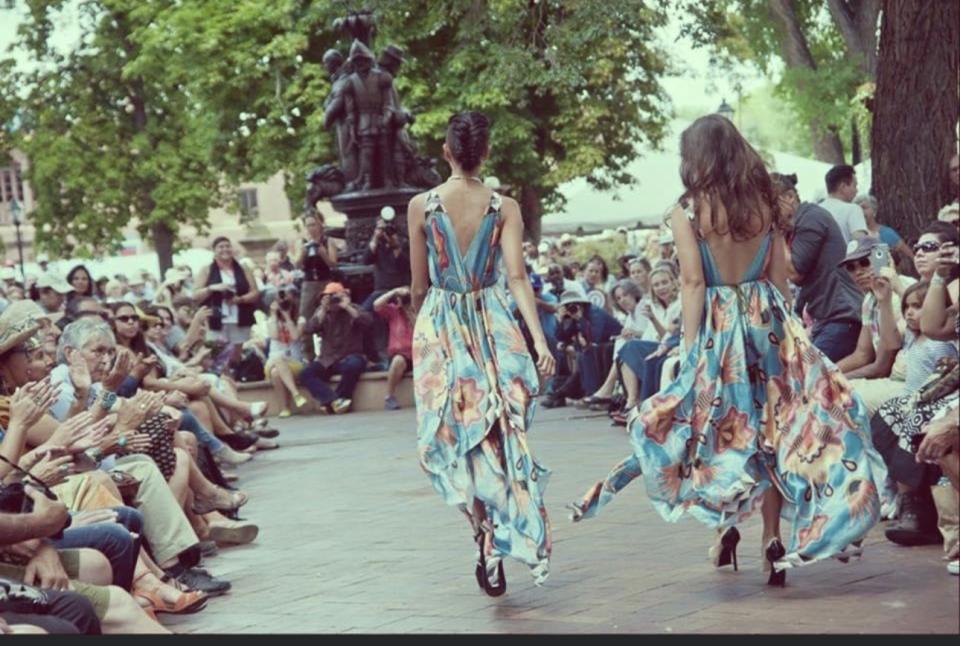
“Before that, Patricia Michaels would do rogue fashion shows during market, parading girls around, but she was the only one. And Virgil Ortiz was hand-painting jackets, but it wasn’t what it is now,” Okuma remembers.
“To see how her career and her name have grown into this brand and entity is beyond my wildest beliefs,” curator and art historian Amber-Dawn Bear Robe, who created the fashion event in 2014, said of Okuma. “Her individual and unique Indigenous design language and seeing that come through in her contemporary work for the general public is extraordinary.”
The SWAIA shows have featured dozens of Indigenous designers from North America over the years, and in 2024 will take on a new form as the first U.S. Indigenous Fashion Week. The 2015 “Native Fashion Now” exhibition organized by the Peabody Essex Museum and curated by Karen Kramer also sparked interest in Native fashion. Another important platform was Jessica Metcalfe’s blog that morphed into the Beyond Buckskin online boutique, which sold Okuma’s work until she launched her own website in 2015.
“The thing now is plagiarism, the interpretations,” Okuma said of cultural appropriation of Native fashion. “You want the knockoff, have fun, but there is an authentic version that is accessible.”
She was recently appointed to the Indian Arts and Crafts Board under the Bureau of Indian Affairs. As part of the role, she’ll be working to prevent products from being advertised, sold or displayed under false claims of being Indigenous made. She’s also set to appear in a PBS special about Native women.
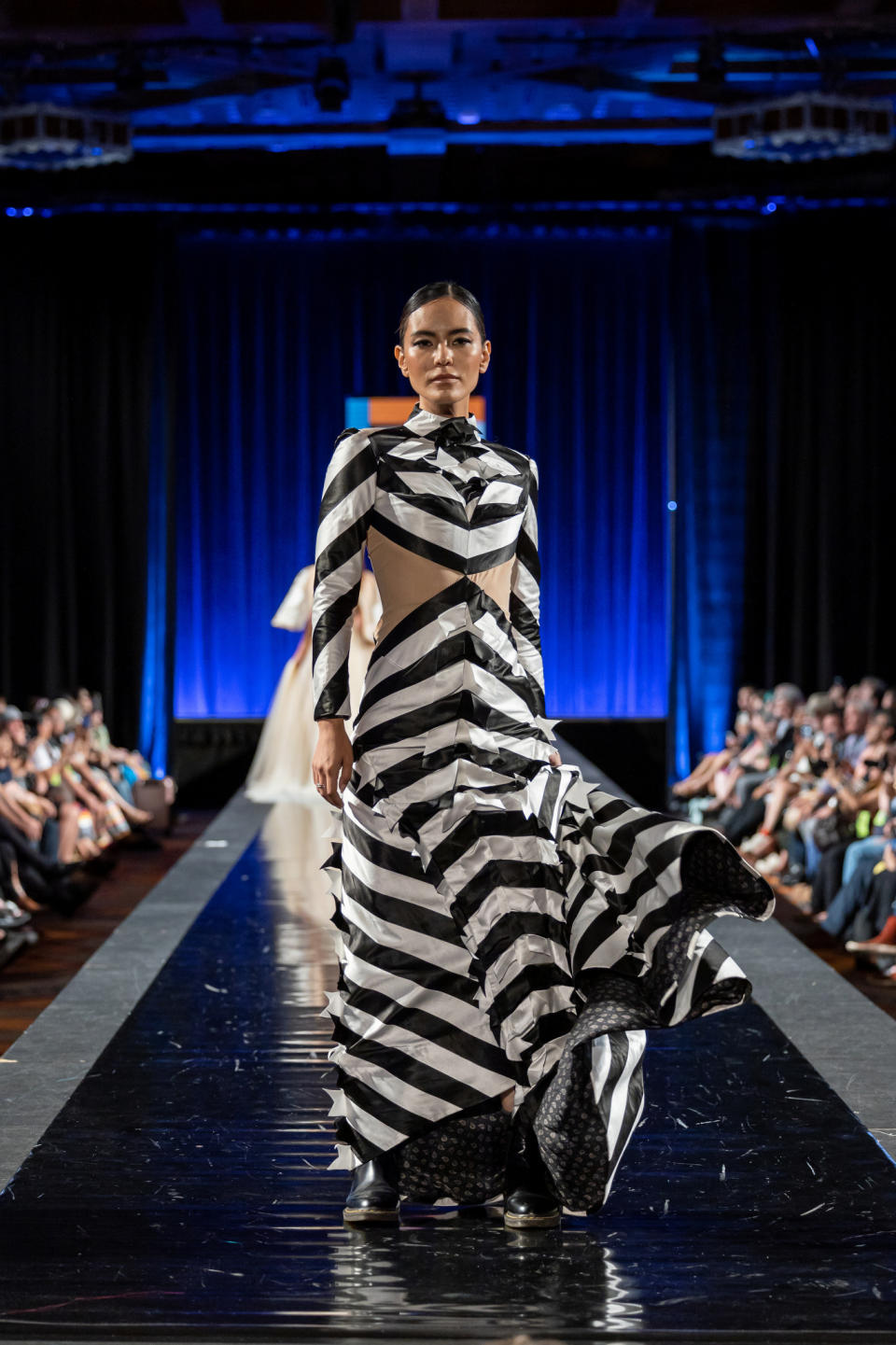
And if she’s lucky, Hollywood strike depending, Okuma may get dress some stars for the premiere of “Killers of the Flower Moon,” the film adaptation of David Grann’s book about murders in Oklahoma’s Osage Nation during the 1920s after oil was discovered on tribal land.
One of the film’s leads, Lily Gladstone, who is of Blackfeet and Nimíipuu heritage, already wore Okuma’s tiered earrings on the red carpet at Cannes, telling Vanity Fair, “Her work has been stunning to me for years.”
But first, there’s Santa Fe, where she’ll reconnect with other designers and her fashion fan club. “It’s so crazy, it’s almost like seeing a relative, I don’t know her but I know this,” Okuma said of seeing so many people in her clothing over the weekend.
She’ll be offering pre-orders of the new collection on her website, which is her only retail channel — for now. “I want to make sure the lead up is right, but I’d love to be able to have things in stores, let alone have my own,” she said, confessing that she already has ideas for her own shoes, and keeps meaning to visit a cobbler in Hollywood to work on prototypes.
“I want it to be where our people can see the influences, but all people can be comfortable wearing it, she said. “If it’s not screaming, it’s something for everyone.”
Best of WWD